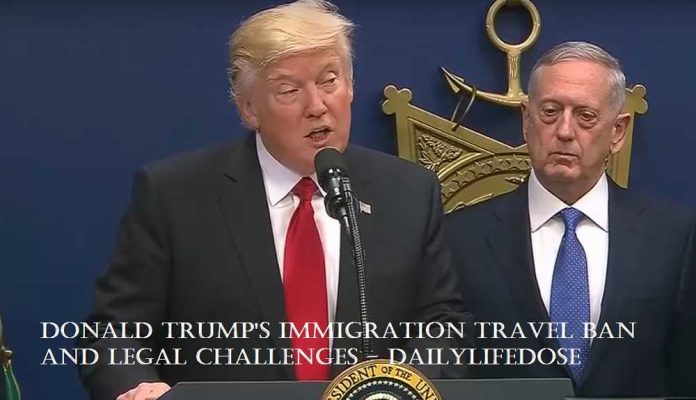Donald Trump is doing what he said during the election campaign, starting from immigration control, Mexican border wall, TPP cancellation and now hitting the terrorists hard.Is he hitting the terrorists hard or it is just a policy gimmick, let us analyze the Trump’s executive order of banning the entry of the citizens of seven countries (Muslim-majority) for 90 days.
The Executive Order:
Newly elected US President Donald Trump passed an executive order (An official statement with the President’s stamp and signature) which stated that citizens of seven countries (Syria, Iran, Sudan, Libya, Somalia, Yemen and Iraq) are banned from entering the United States for next 90 days. The statement also contains another order of suspension of the United States refugee management program for next 120 days. The reason cited for this extreme measure is ‘to keep the radical Islamic terrorists out of the United States.
Affected People:
This controversial executive order affects the citizen of seven Muslim-majority nations, which are Syria, Iran, Sudan, Libya, Somalia, Yemen, and Iraq. Legal US residents (green card holders) have also reported that they have been disregarded by US-bound flights due to that order.
Controversy:
This controversial ban does not apply to the citizens of Saudi Arabia, the United Arab Emirates, and Egypt; however, the US authorities have allegedly targeted these nations for carrying out the 9/11 attacks.
How Does Travel Ban Affect Refugees?
The US initiated a refugee program for Syrian citizens, under that popular arrangement the US had accepted around 12,500 refugees from Syria in 2016. This executive order suspended that program completely. The executive order also mentions the reduction of all refugees from 110,000 to 50,000 in 2017 as well as giving extra preference to Christian refugees from the Middle East over the Muslim refugees.
Is the Order Legally Applicable?
The US President’s executive orders are always legally applicable and Federal Register records each of them as regulations. These orders are always open for legal review. The current controversial executive order is also legally binding; however open for legal review.
Many political analysts suggest that this order violates that Immigration and Nationality Act of 1965 which cancels the discrimination of immigrants on the basis of national origin.
What is Happening Now?
The executive order has been legally challenged in the law of courts and Fifth Amendment right related discussions are witnessed in the courts.
- There has been huge confusion around the validity of US green card for Muslims and travelers are in despair.
- Recently, adding more to the confusion a New York Federal Judge stayed the order on the issue of deportations for people with valid visas.
- Many global Universities, hospitals and tech companies which have US offices are affected by this order; they have been protesting against it.
- Several lawsuits have been filed in the US Federal Courts related to this order.
- Many immigrants have started protesting in front of White House at Washington, at airports and in different nations.
- Protectionism is on the rise with the executive order, many organizations and colleges have warned their employees/students to not to leave the US.
Food for Thought
We leave you with the question about the applicability of the executive order, or should it be called Muslim Ban or just a ban against radical Islam?







